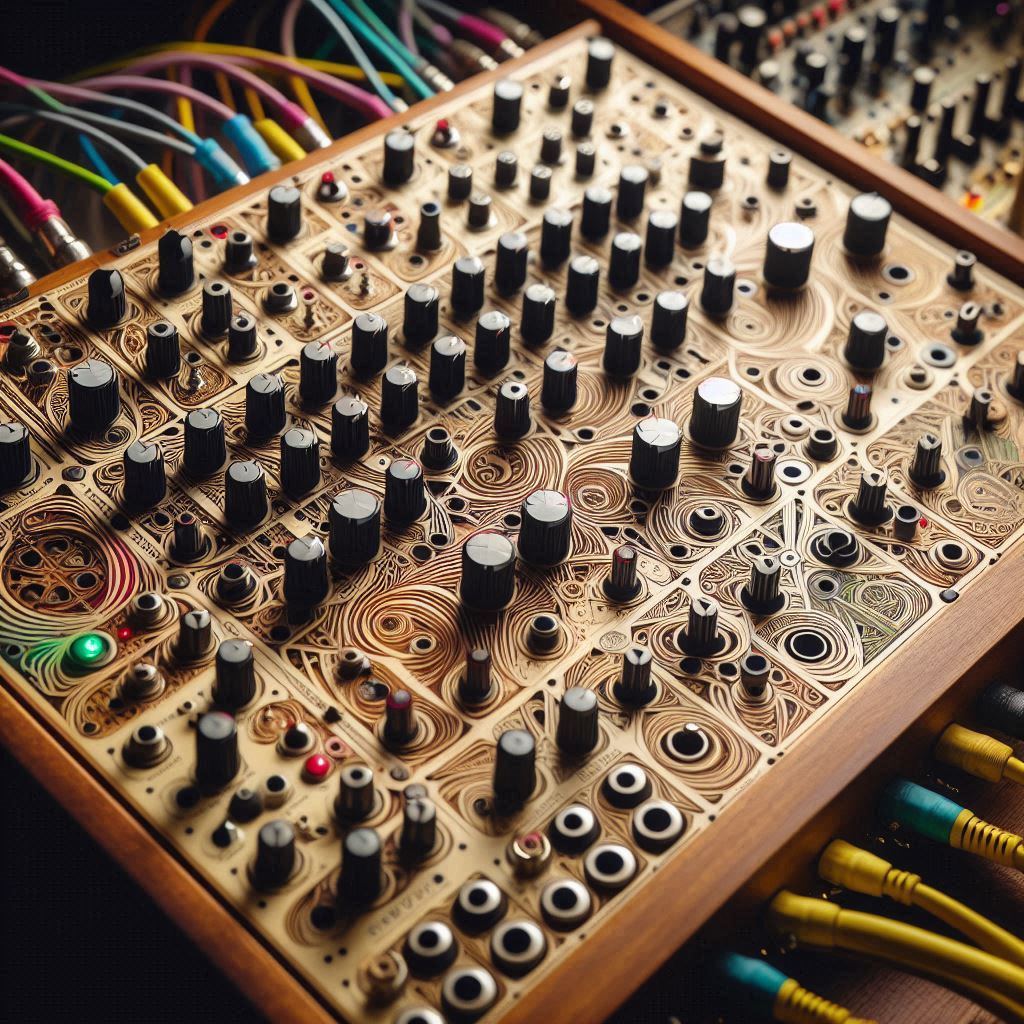A sound synthesizer is an electronic instrument that generates and manipulates audio signals to create various sounds, often imitating traditional instruments or producing unique tones. It uses oscillators, filters, and modulators, and can be controlled via keyboards, sequencers, or software interfaces. Below is a plotted history of music synthesisers.

The history of music synthesizers is rich and multifaceted, tracing the evolution of technology and musical innovation from the early 20th century to the present. Here is an overview of the key milestones in the development of synthesizers:
Early Beginnings (1900s-1940s)
1. The Telharmonium (1897)
- Inventor: Thaddeus Cahill
- Description: An early electromechanical instrument that used tone wheels to produce sound, intended for live performances and broadcast via telephone networks.
- Impact: Laid the groundwork for electronic music by demonstrating the potential of electrical sound generation.
2. The Theremin (1920)
- Inventor: Léon Theremin
- Description: An electronic instrument played without physical contact, controlled by hand movements in the proximity of two metal antennas.
- Impact: Became famous for its eerie sound and was used in film soundtracks and avant-garde music.
Mid-20th Century Developments (1950s-1960s)
3. The Ondes Martenot (1928)
- Inventor: Maurice Martenot
- Description: An electronic keyboard instrument that produced sound using oscillators and was known for its expressive capabilities.
- Impact: Used in classical and contemporary compositions, bridging the gap between traditional instruments and electronic music.
4. RCA Mark II Sound Synthesizer (1957)
- Developed By: RCA
- Description: One of the first programmable synthesizers, using punch cards to control sound generation.
- Impact: Utilized by the Columbia-Princeton Electronic Music Center, influencing academic electronic music.
The Birth of Modern Synthesizers (1960s-1970s)
5. Moog Synthesizer (1964)
- Inventor: Robert Moog
- Description: The first widely available commercial synthesizer, modular in design, using analog circuits to generate sound.
- Impact: Popularized the use of synthesizers in rock and pop music, notably used by Wendy Carlos in “Switched-On Bach” and by bands like The Beatles.
6. Buchla Synthesizer (1963)
- Inventor: Don Buchla
- Description: Another early modular synthesizer, with a focus on experimental music and featuring touch-sensitive controllers.
- Impact: Emphasized alternative ways of interacting with electronic instruments, appealing to the avant-garde community.
7. Minimoog (1970)
- Inventor: Robert Moog
- Description: A portable, self-contained analog synthesizer with a built-in keyboard, making it more accessible for live performance.
- Impact: Became a staple in rock, funk, and electronic music, used by artists like Kraftwerk, Parliament-Funkadelic, and Rick Wakeman.
Digital Revolution (1980s)
8. Yamaha DX7 (1983)
- Developed By: Yamaha
- Description: A digital synthesizer using FM (Frequency Modulation) synthesis, known for its distinctive sound and affordability.
- Impact: Massively popular in the 1980s, shaping the sound of pop and electronic music of the era.
9. Roland D-50 (1987)
- Developed By: Roland
- Description: Combined digital synthesis with sample-based sounds, featuring built-in effects and a user-friendly interface.
- Impact: Widely used in the late 1980s and early 1990s, contributing to the sound of contemporary pop and film scores.
Software and Virtual Synthesizers (1990s-Present)
10. Propellerhead ReBirth RB-338 (1997)
- Developed By: Propellerhead Software
- Description: One of the first software synthesizers to emulate classic analog instruments, such as the Roland TB-303 and TR-808.
- Impact: Demonstrated the potential of software-based synthesis, leading to a surge in virtual instruments.
11. Native Instruments Reaktor (1999)
- Developed By: Native Instruments
- Description: A software platform for building custom synthesizers, samplers, and effects.
- Impact: Empowered musicians and sound designers to create highly customizable and complex sounds.
12. Ableton Live (2001)
- Developed By: Ableton
- Description: A digital audio workstation (DAW) with integrated virtual synthesizers, emphasizing live performance and real-time manipulation.
- Impact: Revolutionized electronic music production and live performance, becoming a standard tool for many artists.
Recent Innovations
13. Modular Synth Revival (2000s-Present)
- Trend: A resurgence in interest for modular synthesizers, combining analog and digital modules.
- Impact: Encouraged a new generation of musicians to explore hands-on sound design and complex synthesis techniques.
14. Eurorack Format
- Description: A standardized modular synthesizer format that has become widely adopted for its flexibility and variety of available modules.
- Impact: Made modular synthesis more accessible and popular, with a vibrant community of users and manufacturers.
Conclusion
The history of synthesizers is a testament to the ongoing innovation in music technology, from early electromechanical devices to today’s sophisticated digital and software-based instruments. Synthesizers have continually expanded the possibilities for sound creation and have profoundly influenced music across genres.
